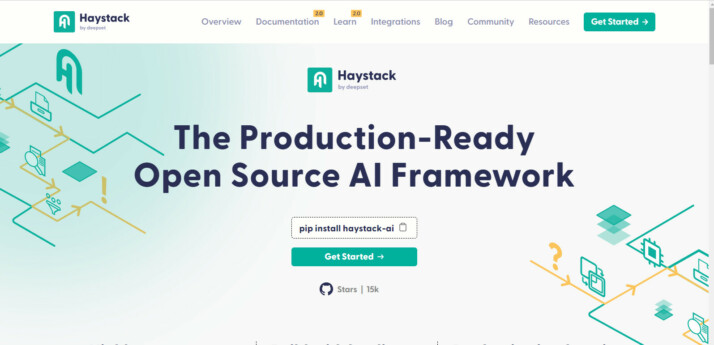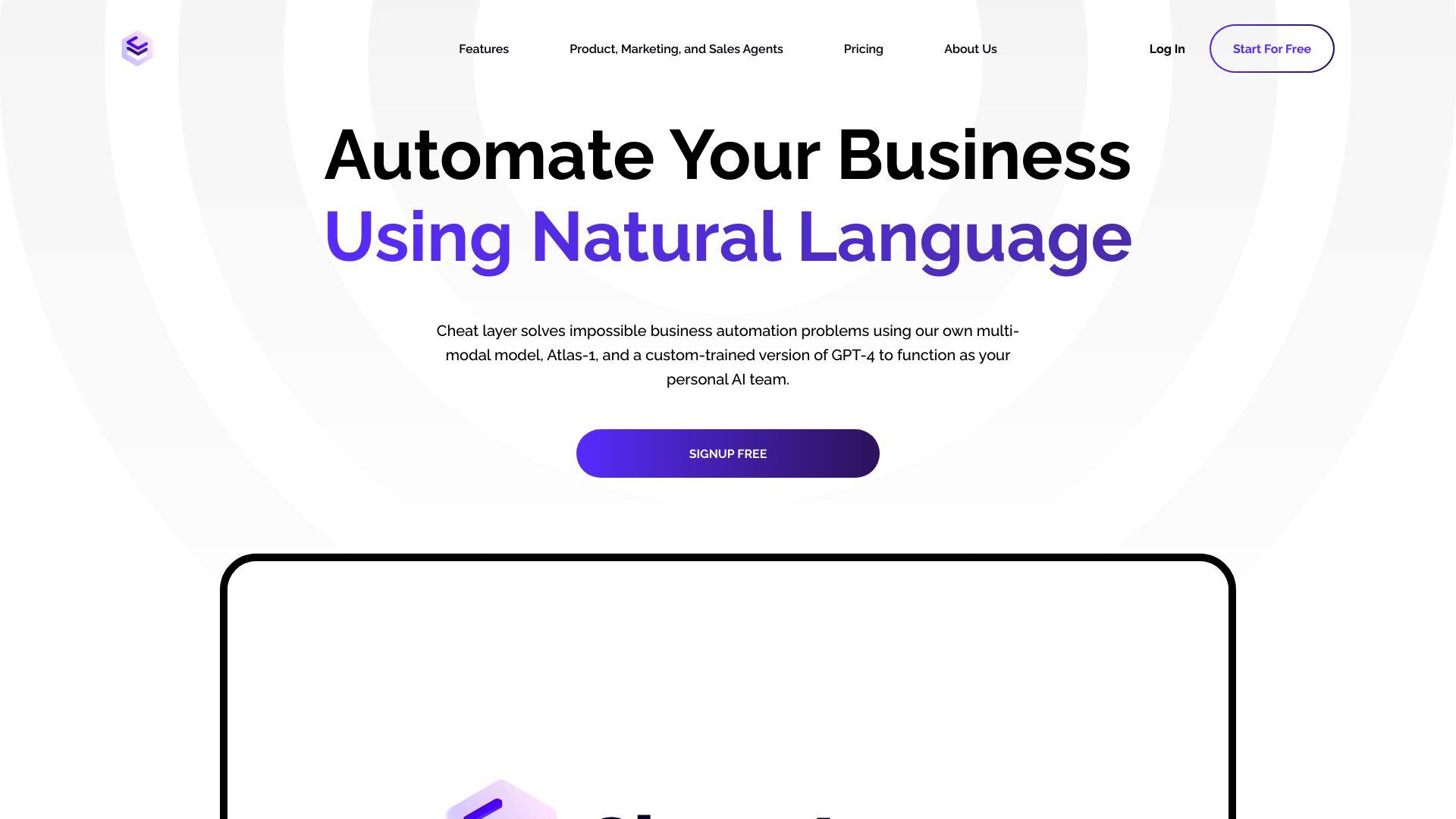Haystack vs. Cheat Layer: Comparing AI Automation Platforms
AI-powered automation platforms are reshaping how businesses operate, innovate, and compete. Haystack vs. Cheat Layer stand out as powerful contenders in this space, each offering unique approaches to harnessing AI’s potential. This comparison delves into the strengths and limitations of both platforms, exploring their features, ease of use, and target audiences. Whether you’re a developer seeking to build complex AI applications or a business user looking to streamline processes, understanding the nuances between these tools is crucial. We’ll also introduce SmythOS, a comprehensive solution that combines the best of both worlds, offering unparalleled flexibility and accessibility. By the end of this review, you’ll have a clear picture of which platform aligns best with your needs, empowering you to make an informed decision in your AI automation journey.
Haystack Overview
Haystack empowers developers to build intelligent applications using Large Language Models (LLMs) and vector search. This open-source framework excels in retrieval-augmented generation, document search, and question answering tasks.


Haystack’s modular architecture allows developers to create custom pipelines by combining components like document stores, retrievers, and generators. This flexibility enables the creation of tailored solutions for specific use cases, from chatbots to complex information retrieval systems.
Haystack’s modular architecture allows developers to create custom pipelines by combining components like document stores, retrievers, and generators.
The framework integrates seamlessly with popular AI tools and models, including Hugging Face Transformers, Elasticsearch, and OpenAI. This broad compatibility ensures developers can leverage cutting-edge AI technologies within their Haystack-powered applications.
Haystack shines in its ability to handle large-scale document processing and indexing. The framework supports various data formats, including PDFs, Word documents, and plain text files. This versatility makes Haystack an ideal choice for organizations dealing with diverse information sources.
Haystack shines in its ability to handle large-scale document processing and indexing. The framework supports various data formats, including PDFs, Word documents, and plain text files.
While Haystack offers powerful capabilities, it requires a certain level of technical expertise to fully utilize. The lack of a visual builder or no-code editor may present a learning curve for non-technical users. However, for developers and data scientists, Haystack provides a robust platform for building sophisticated AI-driven applications.
deepset, the company behind Haystack, also offers deepset Cloud, a commercial SaaS platform that complements the open-source framework. This cloud solution supports the entire lifecycle of NLP application development, from prototyping to production deployment. The combination of Haystack and deepset Cloud provides a comprehensive ecosystem for organizations looking to harness the power of AI in their workflows.
Cheat Layer Overview
Cheat Layer revolutionizes business automation with its AI-powered platform, leveraging a custom-trained GPT-4 version and the multi-modal Atlas-1 model. The software tackles complex automation challenges using natural language, making advanced AI capabilities accessible to non-technical users.


At the core of Cheat Layer’s offering lies the Project Atlas Framework, enabling users to generate unlimited-complexity automations through simple conversations. This innovative approach allows even those without technical expertise to create end-to-end solutions by interacting with the system as if speaking to an engineer. The platform’s Semantic Targets feature ensures robust, future-proof automations that remain functional despite service design updates.
Cheat Layer’s offering lies the Project Atlas Framework, enabling users to generate unlimited-complexity automations through simple conversations.
Cheat Layer’s 1-Click Cloud Agents empower users to deploy pre-built marketing and sales agents directly from mobile devices. This feature streamlines processes like content generation, A/B testing, and lead generation with minimal setup. The platform’s Live Mode facilitates iterative building and deployment of products such as apps and landing pages, providing real-time feedback to ensure outputs match intended goals.
For agencies and businesses seeking customization, Cheat Layer offers white-label solutions. This feature allows the creation and resale of custom automation solutions as branded Chrome extensions, opening new revenue streams for service providers. The platform’s no-code interface, featuring a drag-and-drop editor, further simplifies automation creation for users across skill levels.
Cheat Layer’s vision centers on democratizing business automation through AI, aiming to level the playing field for small businesses competing with larger firms. By providing powerful, accessible, and cost-effective automation tools, the company strives to remove barriers to business creation and operation. This approach fosters an environment where quality service and personal relationships drive success, empowering more businesses to thrive with AI-driven automation.
Feature Comparison
Haystack and Cheat Layer offer distinct approaches to AI-powered automation, each with its own strengths and limitations. Haystack excels in providing a robust framework for building intelligent search and question-answering systems, while Cheat Layer focuses on simplifying business process automation through natural language interactions.
Haystack’s open-source nature allows for extensive customization and integration with various AI models and tools. It supports multi-agent collaboration and provides powerful capabilities for large-scale document processing. However, Haystack lacks a visual builder or no-code editor, which may present challenges for non-technical users.
In contrast, Cheat Layer emphasizes accessibility with its no-code interface and drag-and-drop editor. Its Project Atlas Framework enables users to create complex automations through simple conversations, making it more approachable for business users without technical expertise. Cheat Layer also offers pre-built marketing and sales agents that can be deployed with minimal setup, a feature not present in Haystack.
While both platforms support AI agents, Cheat Layer’s focus on business automation and its custom-trained GPT-4 version may provide more targeted solutions for specific business processes. Haystack, on the other hand, offers greater flexibility for developers to build custom AI applications across a wider range of use cases.
In terms of security and deployment, Haystack provides more detailed information about its capabilities, including support for OAuth and API authentication. Cheat Layer’s documentation is less specific about these features, though it likely offers similar security measures given its focus on business applications.
Ultimately, the choice between Haystack and Cheat Layer depends on the user’s technical expertise and specific automation needs. Haystack is better suited for developers and data scientists building complex AI applications, while Cheat Layer offers a more accessible solution for business users seeking to automate processes without extensive coding knowledge.
Feature Comparison Table
| Haystack | Cheat Layer | SmythOS | |
|---|---|---|---|
| CORE FEATURES | |||
| Visual Builder | ❌ | ✅ | ✅ |
| No-Code Options | ❌ | ✅ | ✅ |
| Agent Work Scheduler | ❌ | ✅ | ✅ |
| SECURITY | |||
| Constrained Alignment | ❌ | ✅ | ✅ |
| IP Control | ❌ | ❌ | ✅ |
| COMPONENTS | |||
| Huggingface AIs | ✅ | ❌ | ✅ |
| Zapier APIs | ❌ | ✅ | ✅ |
| Data Lakes | ❌ | ❌ | ✅ |
| DEPLOYMENT OPTIONS (EMBODIMENTS) | |||
| Staging Domains | ❌ | ✅ | ✅ |
| Production Domains | ❌ | ✅ | ✅ |
| Deploy as Scheduled Agent | ❌ | ✅ | ✅ |
| DATA LAKE SUPPORT | |||
| Hosted Vector Database | ✅ | ❌ | ✅ |
| Sitemap Crawler | ❌ | ✅ | ✅ |
| YouTube Transcript Crawler | ❌ | ✅ | ✅ |
Best Alternative to Haystack and Cheat Layer
SmythOS emerges as a superior alternative to Haystack and Cheat Layer, offering a comprehensive platform for creating and deploying AI agents. We combine the strengths of both competitors while addressing their limitations, providing a versatile solution for businesses and developers alike.
Our visual builder and no-code options surpass Cheat Layer’s offerings, making AI development accessible to users of all skill levels. Unlike Haystack’s developer-centric approach, SmythOS enables rapid prototyping and deployment without sacrificing customization capabilities. This balance of power and simplicity accelerates AI implementation across various industries.
SmythOS excels in its extensive feature set, outpacing both Haystack and Cheat Layer. We offer robust support for multiple AI models, including integration with Hugging Face, which Cheat Layer lacks.
SmythOS excels in its extensive feature set, outpacing both Haystack and Cheat Layer. We offer robust support for multiple AI models, including integration with Hugging Face, which Cheat Layer lacks. Our platform also provides advanced data management capabilities, including data lakes and hosted vector databases, giving users more flexibility in handling large-scale information processing tasks.
Unlike our competitors, SmythOS offers unparalleled deployment options. We support staging and production domains, scheduled agents, and various embodiments such as APIs, webhooks, and site chat integrations. This versatility ensures that AI agents can be seamlessly incorporated into existing workflows and systems, addressing a wider range of use cases than either Haystack or Cheat Layer.
By choosing SmythOS, users gain access to a powerful, scalable, and user-friendly platform that combines the best aspects of Haystack and Cheat Layer while offering unique advantages. Our commitment to innovation and ease of use makes SmythOS the ideal choice for organizations looking to harness the full potential of AI agents in their operations.
Conclusion
Haystack and Cheat Layer offer powerful AI-driven solutions, each with unique strengths. Haystack excels in building intelligent search and question-answering systems, appealing to developers and data scientists. Cheat Layer focuses on simplifying business process automation through natural language interactions, making it accessible to non-technical users.
While both platforms have their merits, SmythOS emerges as the superior choice, combining the best of both worlds. Our drag-and-drop interface rivals Cheat Layer’s ease of use, while our extensive customization options match Haystack’s flexibility. SmythOS supports multi-agent collaboration, provides powerful document processing capabilities, and offers unparalleled deployment options.
Unlike Haystack, which lacks a visual builder, or Cheat Layer, which focuses primarily on business automation, SmythOS provides a comprehensive solution for creating and deploying AI agents across various use cases. Our platform supports over 300,000 integrations, allowing users to connect with a vast ecosystem of tools and services.
Experience the future of AI development with SmythOS. Create a free account today and discover how our platform can revolutionize your workflow. With our extensive documentation and diverse range of templates, you’ll be building and deploying sophisticated AI agents in no time. Unlock the power of AI for your business and stay ahead of the competition with SmythOS.
Last updated:
Disclaimer: The information presented in this article is for general informational purposes only and is provided as is. While we strive to keep the content up-to-date and accurate, we make no representations or warranties of any kind, express or implied, about the completeness, accuracy, reliability, suitability, or availability of the information contained in this article.
Any reliance you place on such information is strictly at your own risk. We reserve the right to make additions, deletions, or modifications to the contents of this article at any time without prior notice.
In no event will we be liable for any loss or damage including without limitation, indirect or consequential loss or damage, or any loss or damage whatsoever arising from loss of data, profits, or any other loss not specified herein arising out of, or in connection with, the use of this article.
Despite our best efforts, this article may contain oversights, errors, or omissions. If you notice any inaccuracies or have concerns about the content, please report them through our content feedback form. Your input helps us maintain the quality and reliability of our information.
